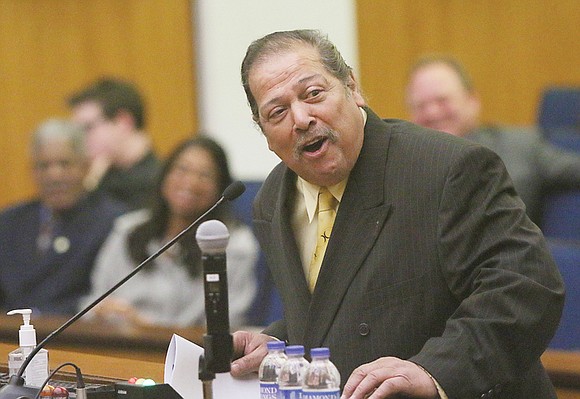‘Deal with the … devils’ stopped Confederate monument removal 25 years ago
9/15/2017, 12:11 p.m.
Chuck Richardson
Twenty-five years have passed since I wrote a letter to a Richmond newspaper about the statues on Monument Avenue. Since that time, so much has changed in Richmond. But sadly, some things remain the same. I would have thought that by now, enough people would have learned that slavery was a cruel, immoral and inhumane institution. I also hoped that more citizens would understand that our most beautiful avenue was the site of symbols that perpetuate the culture and values of a system of slavery.
Twenty-five years ago I was criticized, lambasted and excoriated for urging the city to change Monument Avenue. Although I preferred that the confederate symbols be removed, I agreed to retain them to secure the blessings of some members of Richmond Renaissance. I struck a deal with the proverbial devils to succeed in having the Arthur Ashe statue become a reality on Monument Avenue. Even worse, I compromised my position on the unconditional removal of the Jefferson Davis statue. I had threatened to introduce a City Council proposal on the Davis statue, white supremacy and all the ugly abuses and atrocities of slavery, including lynchings, rapes and public beatings. The Richmond businessmen were staunch supporters of the statues. (I have exercised great restraint regarding circumstances and names of these persons, but there comes a point when forbearance ceases to be a virtue.)
I was shortsighted 25 years ago and eager to achieve one goal — namely an African-American figure on Monument Avenue that would allow black children to imagine themselves worthy of praise and greatness like other people.
I hoped that time would change people and that one day, we would all come to understand that man is not perfect and that we make mistakes as individuals and as governments, that slavery was a mistake and morally wrong. I had hoped that more people would see that the cause for which these confederates fought was consistent with divine moral law that stipulates the equality of all persons before God.
I believed 25 years ago that men would recognize that the Lost Cause was lost because it was wrong and destined for failure.
However, men are imperfect and the mistake of slavery was evident from the beginning. Our pathway to redemption is to acknowledge our mistakes and to forgive our trespasses as we forgive those who trespass against us.
As I sat in those meetings 25 years ago with great men like Clarence L. Townes, Miles Jones, Darrel Rollins, T. Justin Moore, James C. Wheat, Tazewell Carrington and many others, all my senior by many years, I recognized that the fault was not in the machination of government, but rather in the passions and weaknesses of men. The arrogance and haughtiness of individual attitudes, the stubborn unwillingness to admit a mistake, the failure to recognize self aggrandizement and to feel the pains and sentiments of one’s fellow human beings — these human factors derailed the search for a solution about the statues on Monument Avenue.
The fault is not with the landscape of our avenues, but rather with the small-minded, self-centered gardens from which our thoughts grow.
All of these fine men have passed on; it is only because of my youthful status at that time, and God’s grace, that I am still here. The one thing youth afforded me at that time was the mandate to listen rather than speak. All those gentlemen were intelligent, polite, poised and well spoken. But even they could not restrain their passions, and the Monument Avenue symbols elicited harsh, volatile and dangerous emotions.
I wrote Mayor Levar M. Stoney recently and suggested that he cancel further public hearings on these statues. In as much as these, the best of men, would falter in this regard, I concluded that we could expect no less of others, particularly considering what had occurred during the initial public forum at the Virginia Historical Society.
In lieu of open public meetings, I suggested in my letter to the mayor that the Monument Avenue Commission solicit written ideas and evaluate the ideas in private quarters and then make final recommendations to the mayor.
Unfortunately, there is a superficial appearance of racial tranquility in the city of Richmond. But just beneath the surface smolders a hotbed of cinders of racial unrest that could be sparked by the slightest incentive. We don’t need to risk a “Charlottesville.”
The writer served on Richmond City Council from 1977 to 1995.







